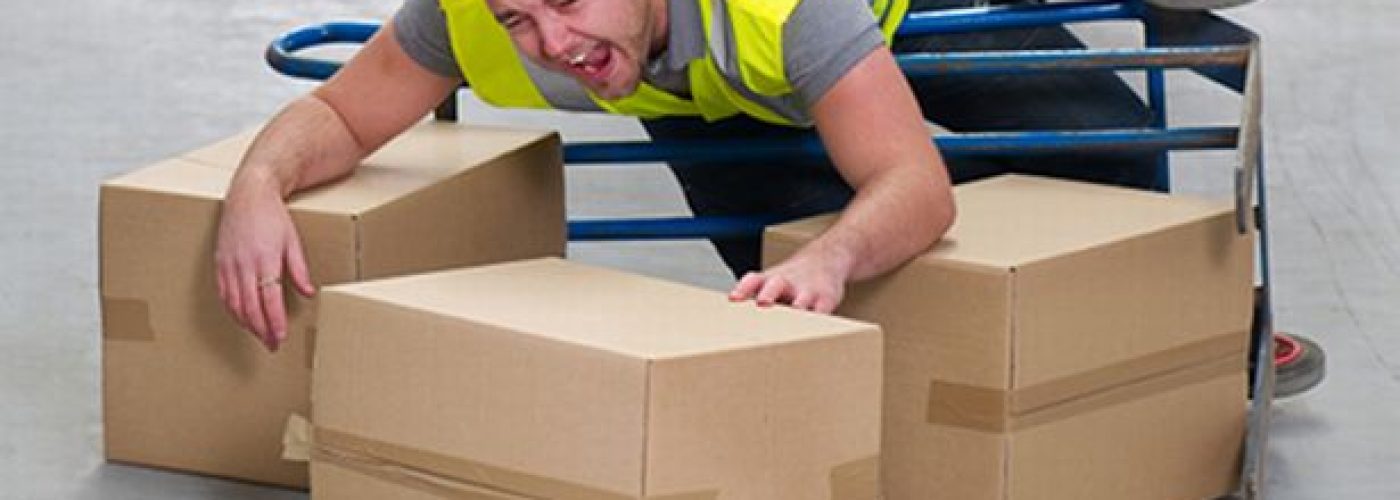Between 2013 and 2014, 1.2 million people in Britain were suffering from a work-related illness. There were 629,000 injuries at work and 27.3 million working days lost. Of these injuries, 142 workers were killed. 2,538 people died from mesothelioma in 2013 too, underlining the dangers of working in industrial environments.
Of all the industries, construction, agriculture, forestry and manufacturing had a significantly higher rate of injury than others. Slingsby, a workplace equipment supplier, has provided a guide to some of the most common injuries workers may experience and how to avoid them.
Asbestos-related disease
5,500 cases of work-related cancer are estimated each year in the construction industry. Of these cancers, lung and mesothelioma are the most common. The leading cause of death is exposure to asbestos.
Solution: Your employer should have rules regarding asbestos. If you suspect there’s asbestos present, stop working and speak to the building owner or your employer. Ensure you have the correct protective equipment and a proactive policy around washing and cleaning to avoid contamination.
Avoid methods that will throw up dust such as power tool usage. Avoid smoking or reusing disposable clothing.
Slips, Trips and Falls
If you’re stationed in an office, don’t think you’re out of danger — far from it, in fact! The most common workplace injuries come from trips and falls on slippery flooring. In 2007 to 2008, four of every 10 injuries at work were due to slips and trips.
Solution: Slippery flooring should be marked with signage or protected with carpet or anti-slip tape.
Muscle Strains
Every time you’re required to lift something, you should take the right precautions. One of the highest percentages of injuries comes from manual handling, as lifting with incorrect form can strain your back or neck, so take care when lifting even trivial items like boxes.
Solution: Lift from your legs rather than your back and ask for proper training if it’s going to be a frequent part of your job. Make sure your back is straight when lifting and ask a colleague to help if it feels too heavy.
Falling objects
Depending on your workplace, falling objects can be extremely dangerous. On building sites especially, a dropped object can become a fatal projectile.
Solutions: Wear your protective equipment whenever you’re on site. Always be aware of people working above you and know the risk.
Repetitive strain injury
Even if you’re involved with construction but don’t spend much time on site, you’ll have to be aware of the risk of RSI. The problem can grow if left unchecked, so mention to your employer.
Solutions: RSI can be prevented with regular breaks, so make sure you take time away from your desk to reinvigorate yourself and prevent injury. You can also ask your employer to bring in ergonomic workstations.
Cuts and lacerations
When you’re handling any equipment with a bladed edge you should be extra careful. Often this is a case of common sense, but you should always wear gloves and eye protectors when you need to handle bladed equipment such as circular saws.
Solutions: A first aid kit or qualified first aider should be near any cutting equipment.
Sound pollution
If you work in a factory or near loud machinery, you need to be aware of industrial deafness. 130 claims were made in 2014for industrial deafness, a rise on figures in 2012 and 2013 but still an overall fall from figures in 2003 and 2004.
Solutions: Ear protectors should be worn if working close to machinery. Frequent breaks should be permitted.
With the right precautions, you’ll be protected from the most common injuries in the workplace. You can read more about other injuries here.





